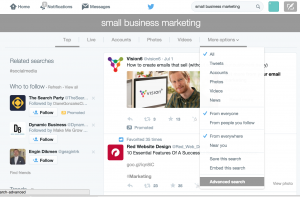Throughout my article Memories of A Content Marketing Guru (1), I detailed proven customer retention tactics as well as content marketing best practices based on my personal experience.
In this article, I will be presenting a detailed case study showcasing how to create a stellar customer experience (CX) during the product pre-launching, presales and post-sales phases.
Product/Customers Specs
I was responsible for designing a well-rounded marketing campaign for an educational mobile application that promised to add the “fun” factor to education. The application was designed to make studying school curriculum more enjoyable for students by offering illustrative videos and interactive exercises.
Target Customers:
The target customers for this application are mainly students (grades 1-to-high school) as well as parents and teachers.
Buyer Personas:
- Student Sam: A school student who’s super-bored with traditional studying and desperately looking for ways to make school work bearable!
- Mother Marie: A busy mother who needs a convenient way to encourage her kids to enjoy studying and excel at school.
- Teacher Mark: A frustrated teacher who’s fed up of the old teaching techniques and is looking for new ways to provide an attractive educational environment for his students.
Marketing Platform:
The campaign was initiated on Facebook.
Product Pre-launching Phase: Teaser 7-Day Countdown Campaign
For the pre-launching phase, we created a sense of suspense with a 7-day countdown teaser campaign.
During the countdown days, we presented different pictures that displayed the same question: “Do you Love studying?”
Each picture featured a different student during the 7 countdown days. Each student responded to the question non-verbally by making a repulsive facial expression. Some of them rolled their eyes, while others expressed anger, disgust, fear, laziness, indifference and so on.
The emotional reactions were so different. Still, we had to ensure that all of them evoked a negative vibe.
The following picture clarifies my point. (Kindly note that the actual campaign targeted Arabic speakers. I’m using the following pictures for illustration purposes.)
![Memories of A Content Marketing Guru (2): Optimizing Customer Experience [Case Study] Memories of A Content Marketing Guru (2): Optimizing Customer Experience [Case Study]](https://www.onlinesalesguidetip.com/wp-content/uploads/2017/11/02-Memories-of-A-Content-Marketing-Guru-2-Optimizing-Customer-Experience-Case-Study.jpg)
Image credit: Background image created by Photoroyalty – Freepik.com
“We feel your Pain”, “Only # days to go” and “Wait for BrandName surprise” were the key messages that we included as hash tags on top of every picture during the pre-launching campaign, enticing our eager audience that to wait 7 days for the big reveal.
The campaign mainly relied on free and organic audience reach. The client invested in paid advertising for the first two pictures in the countdown and that was enough to generate the required level of reach.
The pre-launching teaser campaign resulted in massive user engagement (likes, comments and shares).
The suspense trick worked like a charm as students were impatient to know the magical surprise that will end their studying misery!
Why Was The Pre-launching Campaign A Success?
- The pre-launching campaign images were a powerful reflection of our target customer’s pain points.
- “There’s a problem and our mysterious product is the solution.” was our repeated message that kept our target customers hooked on our page. As a result, our reach was amplified organically.
Post-launching/Pre-sales Phase:
We had to sum up our “Do you love studying?” pre-launching campaign with a picture that showcases how our product would make miserable students ECSTATIC.
![Memories of A Content Marketing Guru (2): Optimizing Customer Experience [Case Study] Memories of A Content Marketing Guru (2): Optimizing Customer Experience [Case Study]](https://www.onlinesalesguidetip.com/wp-content/uploads/2017/11/03-Memories-of-A-Content-Marketing-Guru-2-Optimizing-Customer-Experience-Case-Study.jpg)
Image credit: School image created by Pressfoto – Freepik.com
Key Visual Marketing Best Practices:
If you take a close look at the two images above, you will notice that both of them are branded. During the suspense of the pre-launching phase, we only displayed the Facebook page name within the images as it was the only permissible information that we could share at the time.
After product launching, we included the product name and logo in addition to Android, iOS, and Windows Phone icons. This way, our audience would figure out that our product is an application at a glance. (As mentioned earlier, the pictures above are illustrations of the actual campaign so if they don’t seem graphically perfect, pardon me. I’m a content marketer not a graphic designer. During the actual campaign, I collaborated with graphic designers and made it clear that we would include the mobile platforms icons and showcase the logo prominently. I also gave them the exact textual content to include. They were allowed to get as creative as they wished with the design as long as the intended message was loud and clear. )
Branding every image on the page at all phases is a proven visual marketing best practice. As loyal fans share the images, their entire network would easily recognize our brand.
Kicking Off Product Launch With A Bang!
In order to prove that our educational product was the answer to students’ prayers, we created an animated video that highlighted our unique value proposition (UVP).
The video also included application installation instructions as well as links to download the application on various mobile platforms.
We featured the video on the page and my client invested in promoting it for one day. Again, this investment was enough to generate excellent reach. Needless to say, our happy students spared no effort to spread the word about our app to their colleagues.
Micro-targeted Pre-sales Phase Content
As mentioned earlier, we targeted 3 key marketing segments:
- School Students (The vast majority of our audience)
- Parents
- Teachers
Our content marketing strategy during the pre-sales phase was designed to micro-target each of them. We consistently produced a wide variety of quality content (images, videos, articles…etc.) 75% of which were dedicated to students, while the remaining content addressed parents and teachers.
Our pre-sales content was “Edutaining” as we offered educational content, coupled with entertaining posts including brain teasers and open-ended questions that sparked students’ interests.
As you may’ve guessed, all question-based posts generated massive engagement because we made sure to touch upon student’s challenges, dreams and aspirations.
One of my absolute favorite open-ended questions that we raised was a hypothetical “What If” question saying: “If you became the minister of education tomorrow, what would be your first decision?”
This post, as well as similar highly engaging posts, triggered high volumes of user-generated content that became goldmines for future content ideas.
Post-sales CX Strategy
I firmly believe that the outcome of effective customer retention is creating loyal brand advocates for a life-time That’s why; we gave highest priority, in terms of time and resources, to offering a superior post-sales CX in every imaginable way…
Offering Outstanding Customer Support Services
Promptly and thoroughly responding to customer’s complaints or technical issues should be a no-brainer. In fact, company-wide coordination is essential to ensure that customer support operations run effectively and smoothly.
With regards to the educational application, we were offering technical customer support services via Facebook messages. Accordingly, there was an ongoing communication between the page admins and the application development team.
By time, we created scripts and step-by-step guidelines for repeated scenarios in order to speed up the customer support process and offer a real-time response to most of their problems and concerns.
Leverage Customer’s Feedback
This tip is rather untapped. What’s your typical reaction when a customer gives your Facebook page 5-star rating and writes a brief comment that your product is awesome?
Most marketers would thank the customer for their trust and stop right there. However, much more can be done when a customer proactively provides a brief positive review.
The following is typical private conversation with a happy parent that initiated a brief private feedback.
Parent: Your application is awesome. My kids are loving it.
Page admin: We are thrilled that your kids love our application. How old are they? (Building rapport and getting to know customers on a personal level.)
Parent: My oldest boy is in 4th grade and his sister is in 2nd grade. They used to hate studying math but after trying your interactive exercises, they are enjoying it. (Making a happy customer elaborate on why exactly they love your product is a piece of cake. Based on my experience, you just need to ask few questions and they will open up and share a wealth of details that can be later used as a powerful, trust-inviting testimonial.)
Page admin: That’s awesome. Please let us know if you have any suggestions for making our application more enjoyable for your kids.
Parent: My kids love contests. If you add studying contests to application, kids wouldn’t get enough of it. (Asking a customer that knows your product in-depth for improvement suggestions may lead to sound product enhancement ideas, not to mention the added advantage of magnifying customer’s loyalty by making them feel that their opinions are valued and appreciated.)
Page admin: That’s a fantastic idea and a very attractive feature for kids. We appreciate your valuable input. I share it with the top management. When we have it ready, you’ll be the first to know for sure :). (If the customer idea is really good, make sure to save his contact information to acknowledge them later after executing it.)
Parent: Thanks and keep up the good work.
Page admin: Thank you so much for your positive feedback. Please share our page with your friends and give us a review on this link: LinkofPageReviews.
Parent: Sure thing. Have a nice day.
As you see, leveraging a brief customer feedback led to a solid testimonial, a sound product enhancement idea and enticed a happy customer to turn his private review into a public review and gladly shared our page with his network.
Building trust and opening communication channels with existing customers is much easier than acquiring new ones. Still, it boggles my mind that many marketers overlook such timeless tactic.
Offering Attractive Alternatives
We often get inquiries about features that the current application doesn’t support. In response, we don’t take the easy route of just saying: “Sorry we don’t have what you’re looking for.” Instead, we propose alternatives that are both RELEVANT and attractive.
For example, our educational application covers the national educational curriculum. Students who are studying in schools that offer more advanced language curriculums inquire about their own subjects.
In this case, we make it clear that our application is covering the national curriculum at the moment but we also draw their attention about that can take advantage of our application to study the common subjects that are obligatory for all students.
We also inform them about our free service “Ask the teacher” where they may send questions about any school subject and our teachers would provide prompt and detailed answers to them.
On top of that, we send them links to content that’s micro-targeted depending on the inquirer. If we received the inquiry from a student, we send them links to our “Enjoy Studying” videos and articles.
On the other hand if the inquirer was a concerned parent, we send them links to our “Parenting Advise” content. Similarly, we offer teachers “Teachers Guidelines” content.
This example showcases how quality content can magnify customer loyalty. Even if our application doesn’t include all the features they have in mind, our alternative features and relevant content will keep them interested in our brand. It’s important to note that we proactively provided such attractive alternatives rather than waiting for them to ask.
Referrals And Cross-selling: The Magnificent Outcomes Of A Superior Customer Experience
My client offered three educational products. Since Facebook was our primary marketing platform, each product had a separate Facebook page.
We took advantage of the “Pages liked by this page” feature to cross-promote the three products. In addition, we shared content of pages A and B within page C to invite fans of a certain product to take notice of the other products by visiting their pages.
Needless to say customers who are happy with one product will be willing to check out more of our products. As a result, cross-selling opportunities are maximized.
As for customer referrals, we often ask customers who provide positive feedback for referrals and they do for sure. Interestingly, we get a substantial number of referrals without asking for them thanks to the power of word-of-mouth marketing.
So, again it all boils down to creating a superior customer experience and the rest will follow. Referrals, up-selling, cross-selling and all the imaginable revenue generation tactics are easy to achieve with a happy customer.
What are you doing to make your customers happy today and happily ever after? <h3>
Please share your thoughts and insights in the comments.
Your valuable contribution is much appreciated. To our success!
* Adapted lead image: Public Domain, pixabay.com via getstencil.com
The post Memories of A Content Marketing Guru (2): Optimizing Customer Experience [Case Study] appeared first on Search Engine People Blog.
(51)
Report Post
![Memories of A Content Marketing Guru (2): Optimizing Customer Experience [Case Study] Memories of A Content Marketing Guru (2): Optimizing Customer Experience [Case Study]](https://www.onlinesalesguidetip.com/wp-content/uploads/2017/11/01-Memories-of-A-Content-Marketing-Guru-2-Optimizing-Customer-Experience-Case-Study.jpg)








